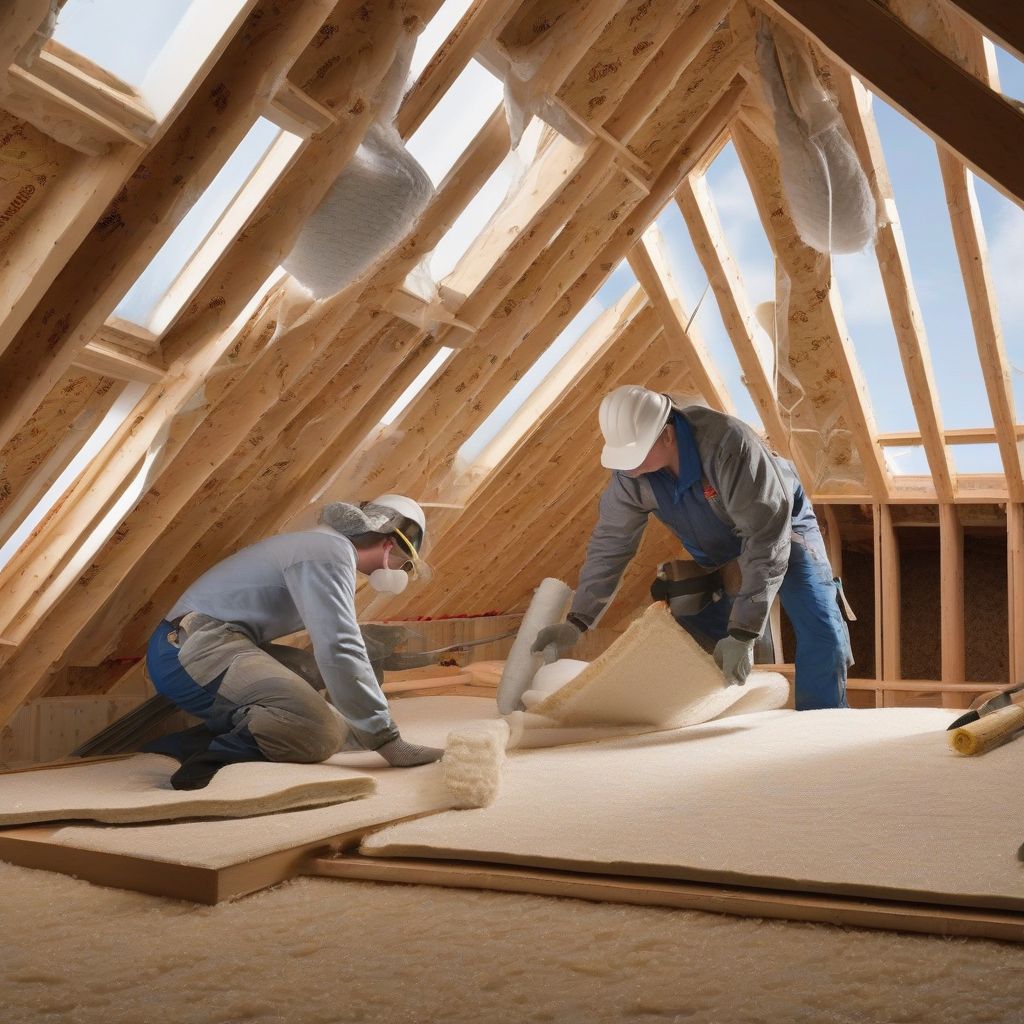Are you tired of seeing your hard-earned money disappear into thin air every time you open your utility bill? You’re not alone! Many homeowners struggle with high energy costs, especially during extreme weather. But what if I told you there’s a secret weapon that can help you slash those bills and create a more comfortable home year-round? That secret weapon is insulation. In this guide, we’ll delve into the world of home insulation, exploring how it works, the different types available, and how you can choose the right one for your needs to maximize your energy savings.
Understanding the Power of Insulation
Insulation acts like a cozy blanket for your home, preventing heat from escaping in the winter and keeping cool air in during the summer. This means your HVAC system doesn’t have to work as hard to maintain a comfortable temperature, resulting in lower energy consumption and, ultimately, lower utility bills. Think of it like wearing a warm sweater on a cold day – you stay warm without having to crank up the heat.
How Heat Transfer Works
To truly appreciate the benefits of insulation, it’s helpful to understand how heat transfer works. There are three main ways heat travels: conduction, convection, and radiation. Insulation combats all three by creating a barrier that slows down heat transfer.
- Conduction: Heat moving directly through a material (like a hot pan handle).
- Convection: Heat transfer through the movement of fluids (like warm air rising).
- Radiation: Heat transfer through electromagnetic waves (like the sun’s warmth).
Measuring Insulation Effectiveness: R-Value
The effectiveness of insulation is measured by its R-value. The higher the R-value, the better the insulation’s ability to resist heat flow. Choosing the right R-value depends on your climate and the area of your home you’re insulating.
Types of Home Insulation
There’s a wide variety of insulation materials available, each with its own pros and cons. Let’s explore some of the most common options:
Fiberglass Insulation
Fiberglass, made from recycled glass, is the most common type of insulation. It’s relatively inexpensive and effective, offering a good R-value per dollar.
Cellulose Insulation
Cellulose insulation, made from recycled paper, is another eco-friendly option. It has a slightly higher R-value than fiberglass and can fill in small gaps and cracks effectively.
Spray Foam Insulation
Spray foam insulation expands to fill cavities, creating an airtight seal that minimizes air leaks and maximizes energy efficiency. It’s a great option for hard-to-reach areas.
Mineral Wool Insulation
Mineral wool, made from rock or slag, is a fire-resistant and moisture-resistant option. It’s also a good sound insulator.
Radiant Barriers
Radiant barriers are reflective surfaces that reduce heat transfer from radiation. They’re most effective in hot climates, reflecting the sun’s heat away from your home.
Choosing the Right Insulation for Your Home
Selecting the right insulation depends on several factors, including your budget, climate, and the area of your home you’re insulating. For example, attics typically require higher R-values than walls. Consulting with a qualified energy auditor can help you determine the optimal R-value and insulation type for your specific needs. “Choosing the right insulation is like selecting the right tool for the job,” says energy efficiency expert, Dr. Emily Carter. “Each material has its strengths and weaknesses, so it’s important to consider your individual circumstances.”
DIY vs. Professional Installation
While some insulation projects can be tackled as DIY endeavors, others are best left to the professionals. Installing insulation in attics or crawl spaces, for example, can be challenging and potentially dangerous. Professional installers have the experience and equipment to ensure proper installation and maximize energy efficiency.
Beyond Insulation: Other Energy-Saving Tips
While insulation plays a crucial role in lowering utility bills, it’s not the only solution. Combining insulation with other energy-saving strategies can amplify your savings.
Sealing Air Leaks
Air leaks around windows, doors, and other openings can significantly impact your energy bills. Caulking and weatherstripping are simple yet effective ways to seal these leaks and prevent drafts.
Upgrading Windows and Doors
Replacing old, drafty windows and doors with energy-efficient models can make a big difference in your home’s energy performance. Look for windows with low-E coatings and doors with good insulation values.
Maintaining Your HVAC System
Regular maintenance, such as changing air filters and scheduling annual tune-ups, can help your HVAC system run more efficiently and prolong its lifespan.
 Home Insulation
Home Insulation
Maximizing Your Return on Investment
Insulating your home is not just an expense; it’s an investment. By reducing your energy consumption, you’ll save money on your utility bills month after month, year after year. Over time, these savings can add up significantly, providing a substantial return on your investment. “Think of insulation as a long-term savings plan,” advises financial advisor, Mark Johnson. “The upfront cost is quickly offset by the ongoing energy savings, creating a positive financial impact for years to come.”
Conclusion
Lowering your utility bills and creating a more comfortable home is within your reach. By understanding the principles of insulation, choosing the right materials, and implementing other energy-saving strategies, you can transform your home into an energy-efficient haven. Start by assessing your home’s current insulation and identifying areas for improvement. Then, consult with a qualified professional to determine the best course of action. Don’t let your hard-earned money escape through poorly insulated walls and attics. Invest in insulation today and enjoy the benefits of a warmer, cozier, and more affordable home tomorrow. What steps are you taking to improve your home’s energy efficiency? Share your thoughts and experiences in the comments below!



